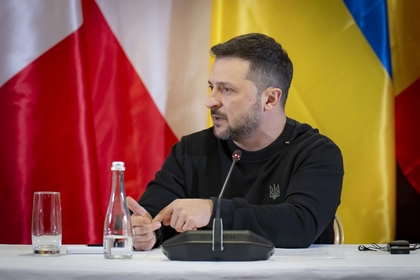Commander-in-Chief of the Ukrainian Armed Forces (AFU), Oleksandr Syrsky, announced a successful strike on a Russian S-300 anti-missile system near Mariupol in the occupied Donetsk region.
JOIN US ON TELEGRAM
Follow our coverage of the war on the @Kyivpost_official.
Syrsky confirmed the strike and commended Ukrainian servicemen for their successful execution of the mission.
The explosions in Mariupol occurred late on July 15, just before midnight. Initially, Petro Andryushchenko, an advisor to the exiled mayor of Mariupol, reported at least two impacts between the Nevsky quarter and Agrobaza, towards Mangush.
Pro-Russian media claimed their air defenses had intercepted all incoming missiles, but eyewitnesses shared photos on social media showing a significant fire near Melekyne, believed to have started during the bombardment.
“Based on the attack’s nature, first the air defense base was exposed, and then the air defense systems ‘got the presents,’” Andryushchenko reported.
On July 16, Syrsky released a video confirming the destruction of the Russian S-300 system.
According to Militarnyi media outlet, Ukrainian missile forces used ATACMS to fire at least four M39 cluster ballistic missiles at Russian anti-aircraft positions on the outskirts of Mariupol.
“The damage to enemy radar stations and launchers has been confirmed based on intelligence reports,” wrote Syrsky, adding that further details about the strike’s impact are being assessed.

Ukraine’s Lost 40% of Kursk Region Gains Official Says
The Russian S-300’s location was pinpointed east of Mangush village in the Donetsk region, approximately 7 kilometers from the Mariupol airfield, as reported by Militarnyi.
Last October, Ukraine received its first ATACMS missiles, specifically the older M39 cluster version with a range of 165 kilometers.
This year, following a US Congress vote, the US supplied missiles with an extended range of 300 kilometers.
You can also highlight the text and press Ctrl + Enter







